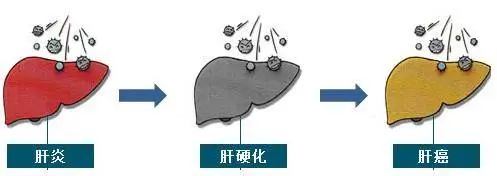Title: Transformation from Positive HBV Markers in a Hepatitis B Five-Panel Comparison Table
Introduction:
Hepatitis B is a viral infection that affects the liver, leading to acute or chronic liver diseases. The detection and monitoring of hepatitis B virus (HBV) infection are crucial for proper management and treatment. The HBV five-panel comparison table is a diagnostic tool commonly used for analyzing the presence of specific markers associated with HBV infection. This article aims to discuss the transformation from a positive result in HBV markers 2, 4, and 5 to a positive result in markers 2 and 5.
Body:
1. Understanding the HBV Five-Panel Comparison Table:

The HBV five-panel comparison table consists of markers representing different components of HBV infection, including HBsAg (Hepatitis B surface antigen), HBeAg (Hepatitis B e antigen), HBcAb (Hepatitis B core antibody), HBsAb (Hepatitis B surface antibody), and HBcIgM (Hepatitis B core IgM antibody). These markers help in determining the stage of infection and the immune response against HBV.
2. Original Positive Result in Markers 2, 4, and 5:
When a person's HBV five-panel comparison table shows a positive result in markers 2, 4, and 5, it indicates the presence of HBsAg, HBsAb, and HBcIgM antibodies. This signifies an active HBV infection, where the immune system is producing antibodies against the viral antigens. In this stage, the viral load is usually high, and the risk of liver damage is significant if left untreated.

3. Transformation to Positive Result in Markers 2 and 5:
A transformation from a positive result in markers 2, 4, and 5 to a positive result in markers 2 and 5 occurs when the HBcIgM antibody becomes undetectable, while the presence of HBsAg and HBsAb antibodies persists. This transformation suggests a transition from the acute phase to the chronic phase of HBV infection. The disappearance of the HBcIgM antibody indicates a decrease in viral replication and a potential progression towards viral clearance or viral dormancy.
4. Clinical Implications of the Transformation:
The transformation from markers 2, 4, and 5 positive to markers 2 and 5 positive signifies a change in disease progression and immune response. It suggests that the viral replication is slowing down, reducing the risk of liver damage. However, the presence of HBsAg and HBsAb antibodies indicates that the virus is not completely cleared from the body, and the person remains chronically infected. Close monitoring of liver function, viral load, and potential complications is necessary to prevent disease progression and ensure optimal management.
Conclusion:
The transformation from a positive result in HBV markers 2, 4, and 5 to a positive result in markers 2 and 5 signifies a shift in disease progression from active infection to chronic infection. Understanding the implications of these changes in the HBV five-panel comparison table is crucial for healthcare providers to plan appropriate treatment strategies and monitor disease progression. Regular monitoring of liver function and viral load is necessary to ensure early intervention and prevent long-term complications associated with chronic hepatitis B.

